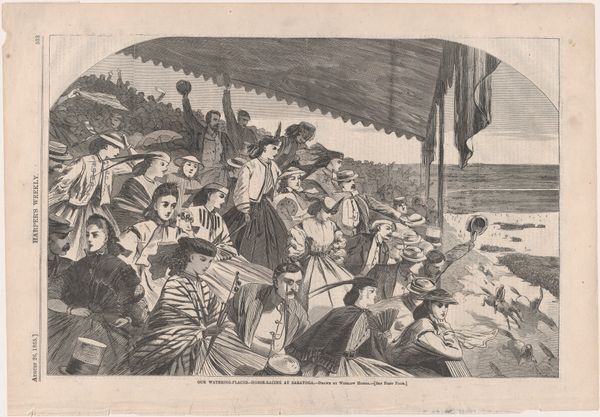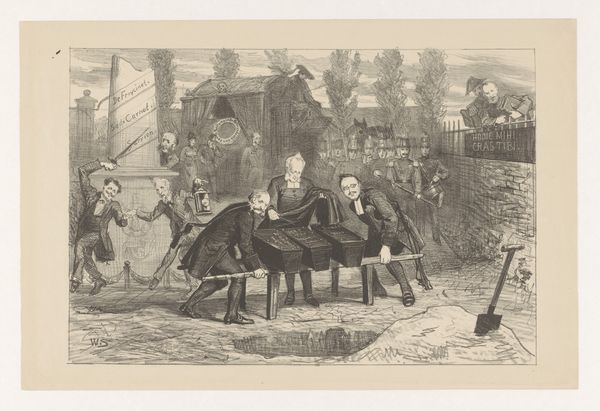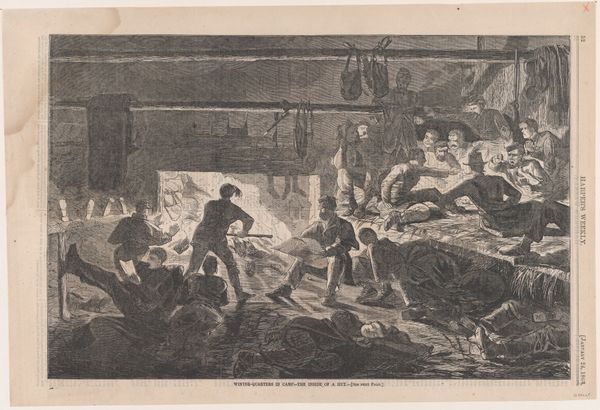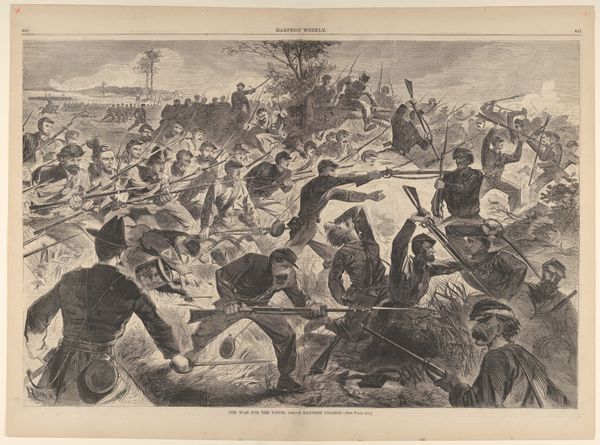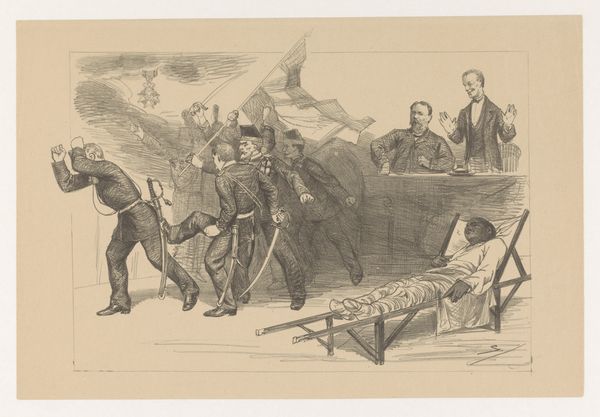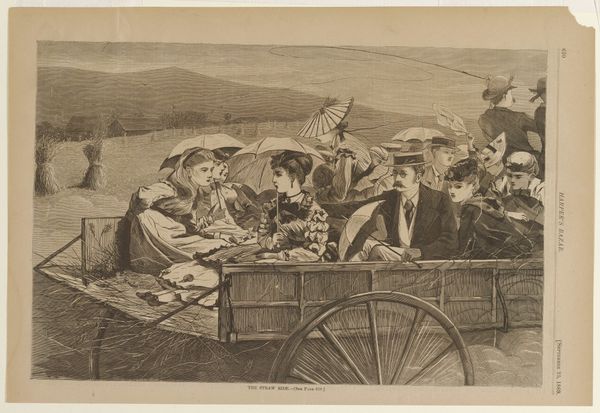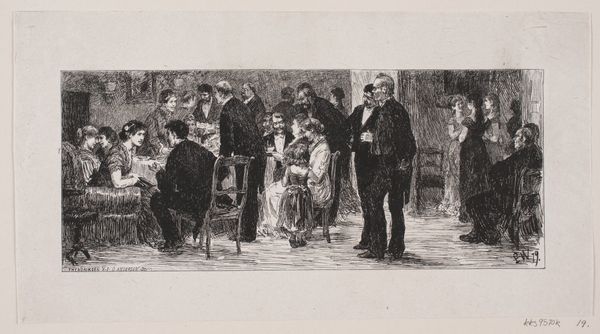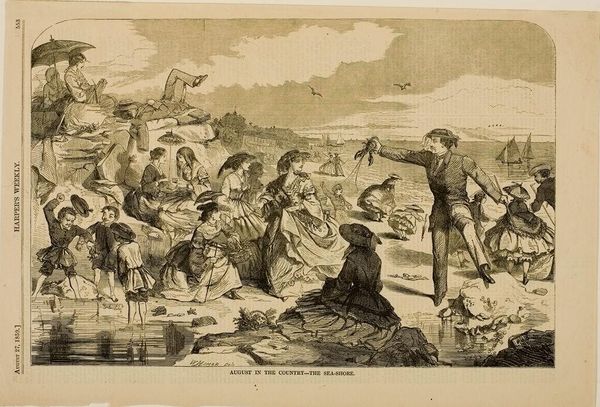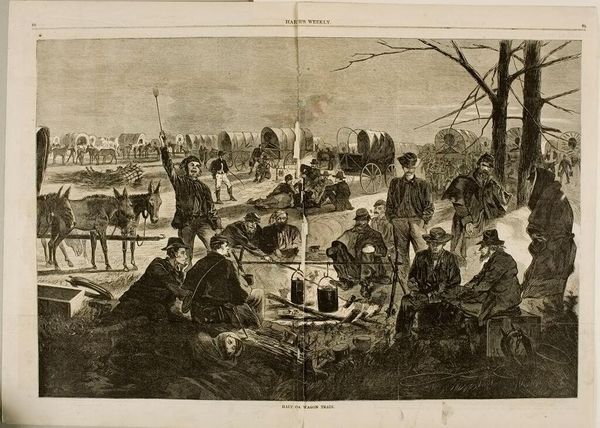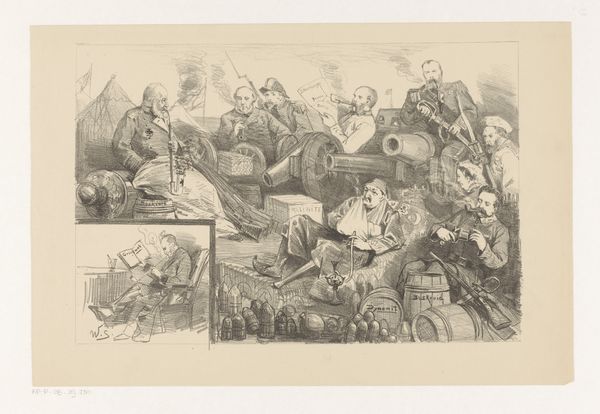
Thanksgiving in Camp (from "Harper's Weekly," Vol. VII) 1862
0:00
0:00
drawing, print, engraving
#
drawing
# print
#
war
#
landscape
#
soldier
#
men
#
genre-painting
#
history-painting
#
engraving
Dimensions: image: 9 1/8 x 13 1/4 in. (23.2 x 33.7 cm) sheet: 10 13/16 x 16 1/8 in. (27.5 x 40.9 cm)
Copyright: Public Domain
Curator: Winslow Homer's "Thanksgiving in Camp," an engraving from 1862, offers us a glimpse into a Union Army encampment during the Civil War, originally published in *Harper's Weekly*. It's a scene teeming with small dramas and quiet moments amidst a larger, ongoing national tragedy. What strikes you most about it? Editor: Honestly? The weariness. You can practically taste the dust and feel the aching bones in the slumped postures of these men. There's a communal aspect too, a makeshift attempt at normalcy through a holiday celebration, yet it’s underscored with an inescapable air of melancholy, you know? Curator: The depiction of that 'makeshift' Thanksgiving highlights the importance of maintaining cultural traditions during wartime. These soldiers, far from home, recreate familiar rituals as a form of psychological survival. The symbols are compelling; the humble campfire mimics a hearth, offering a focal point of warmth and connection amidst the harsh realities of conflict. It reflects how humans rely on familiar symbols during upheavals. Editor: Right, and it isn’t a grand, staged patriotic scene, which you might expect. It's… human. You've got soldiers huddled together, some writing letters, maybe trying to block out the noise, the smells... There's a profound sense of waiting—of suspended animation. It kind of creeps under your skin. Curator: The setting itself, a rudimentary camp, is potent with symbolic significance. Camps are by their very nature transient, uncertain spaces. Here, this contrasts sharply with the desire for continuity embodied by Thanksgiving. I am thinking about the table where a group is focused around some sort of game: do you think this could reference similar tableaus representing the Last Supper? Or even a courtly gaming scene? Editor: You know, the "Last Supper" imagery actually crossed my mind! Perhaps. And, you’ve nailed the 'uncertain' quality. But it all speaks volumes about resilience and adaptation. Curator: Yes! Through these humble rituals, like the figures near the fire brewing coffee, a semblance of order and community emerges from the chaos, echoing our innate need to define ourselves and the space around us, despite the turmoil. Editor: Ultimately, Homer captures the stoic grace inherent to this scene – the will to find comfort and meaning even in the shadow of profound trauma. The American spirit indeed. Curator: Precisely. It offers a poignant, enduring commentary on the human spirit, rendered in stark lines that resonate even today.
Comments
No comments
Be the first to comment and join the conversation on the ultimate creative platform.

